- 6 Minutes to read
- Print
- DarkLight
- PDF
Dynamic Planning Model Manager Layouts
- 6 Minutes to read
- Print
- DarkLight
- PDF
Overview
Model Manager offers three layouts: Grid, List, and Model Relationship.
You can select which layout you prefer by clicking the corresponding icon.
Grid: shows models in boxes
List: shows models in a detailed list, including model size
Model Relationship (not available for Reviewer users): shows the relationship between Master models, Source models, and Target models
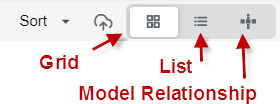
When you start Model Manager, the first screen you see is the Grid layout. The grid contains one or more Model boxes.
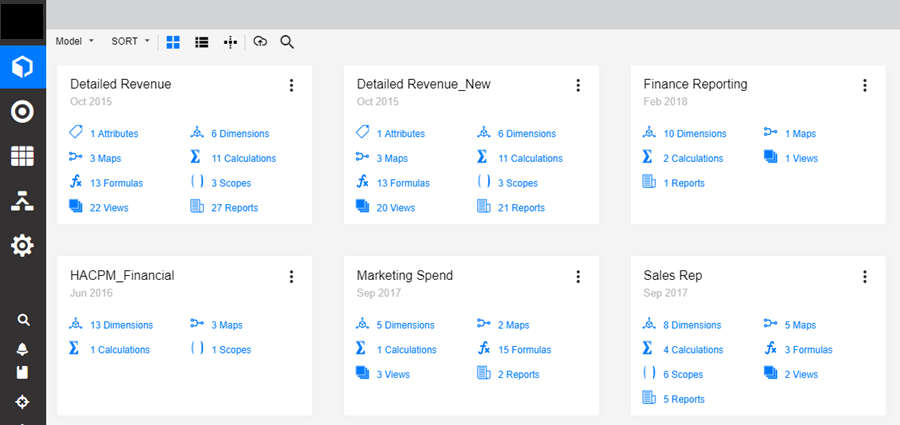
You can sort how you see the models by name, creation date, model size, or last modified date. By default, models are listed in alphabetical order by model name.
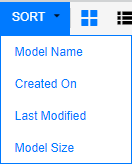
You can return to Views or Reports using the task menu.
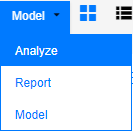
You can search for models by using the magnifying glass icon. Type a few letters in the name of the model to quickly find it.

You can use the Help, Account, or Log off buttons.

Using the Model Boxes
The Grid and Model Relationship layouts display the models in Model boxes. All users have access to the Grid layout, and it is the default layout when you start Model Manager.
The Model Box includes:
Model name
Creation date
More menu
List of artifacts
Locked or Ungenerated icons
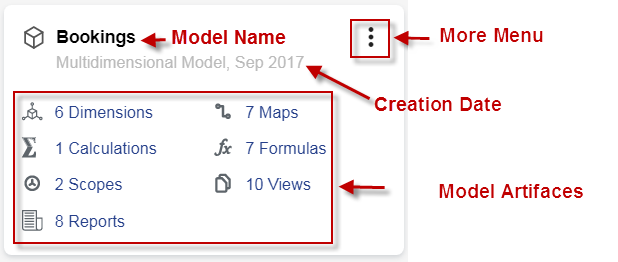
The models you can see are the models you have been given access to.
Not all models include all types of artifacts.
When you click on an artifact, the last 5 items used are shown in a list box. Click one to open it, or click More... to see all artifacts of that type.
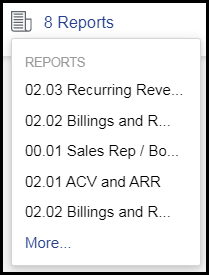
If you have a report that includes data from multiple models, that report is listed under the Report artifact for both models.
If you click on a model name in a model box, the layout goes to the Model Relationship layout.
When a model is in a Locked state, you see a Locked icon next to the model name.

When a model is in an Ungenerated state, you see an Incomplete circle icon next to the model name.

When a model is an External Source Model, you see a different icon.
![]()
The More menu changes based on the model's status: generated or ungenerated.

More menu options for Generated models:
Add, Map (not available for Reviewer users)
Clear Model (not available for Reviewer users)
Lock Model (not available for Reviewer users)
Model Backup (not available for Contributor or Reviewer users)
Model Statistics (not available for Reviewer users)
Model Activity (not available for Reviewer users)
Model Artifacts
More menu options for Ungenerated models:
Add, Map (not available for Reviewer users)
Generate Model (not available for Reviewer users)
Delete Model (not available for Reviewer users)
Model Backup (not available for Contributor or Reviewer users)
Model Statistics (not available for Reviewer users)
Model Activity (not available for Reviewer users)
Model Artifacts
More menu items for External Source Models :
Clear Model (not available for Reviewer users)
Delete Model (not available for Reviewer users)
Model Backup (not available for Contributor or Reviewer users)
Model Statistics (not available for Reviewer users)
Model Activity (not available for Reviewer users)
Model Artifacts
The Model box is a launchpad to more information about the model. You can click on artifacts of a Model box to see additional information.
Reports and Views artifacts run the Report or View selected.
Dimension and Attribute artifacts open the Dimension Browser or Attribute Browser.
Maps, Calculations, Formulas, and Scopes artifacts open the Model Artifacts Browser.
When you click the Creation Date, the Model Properties panel appears.
Model Properties
In the Grid or List layouts, when you click the Creation Date, the Model Properties panel appears.
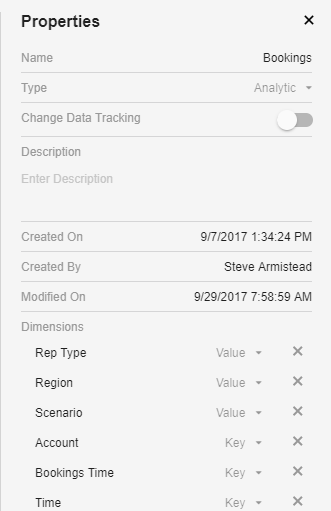
The only items you can change are turning Change Data Tracking on or off, and adding or editing the Model description. At the bottom of the Properties panel, you can click Save or Cancel.
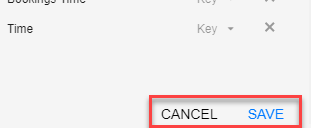
Using the Grid Layout
To use the Grid layout, click the Grid icon on the Model Manager ribbon.

All users have access to the Grid layout, and it is the default layout when you start Model Manager.
The grid contains one or more Model boxes for all the models you have access to.
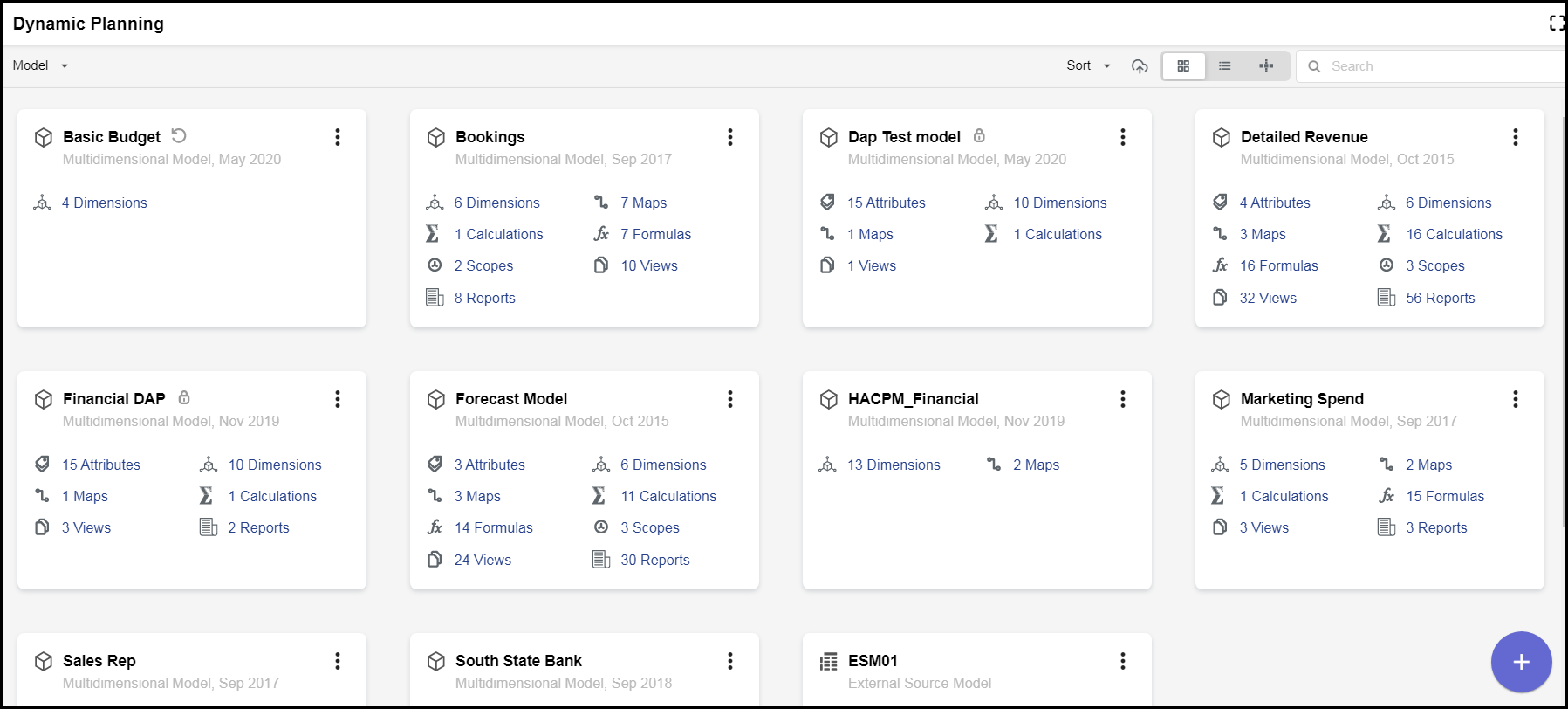
If you click on a model name in a model box, the layout goes to the Model Relationship layout. To return to the Grid layout, click the Grid icon.
You can sort the models shown in the grid using the Sort menu.
You can click on artifacts of a Model box to see additional information.
Reports and Views artifacts run the Report or View selected.
Dimension and Attribute artifacts open the Dimension Browser or Attribute Browser.
Maps, Calculations, Formulas, and Scopes artifacts open the Model Artifacts Browser.
When you click the Creation Date, the Model Properties panel appears.
Using the List Layout
To use the List layout, click the List icon on the Model Manager ribbon.

All users have access to the List layout.
The list contains details for all the models you have access to.
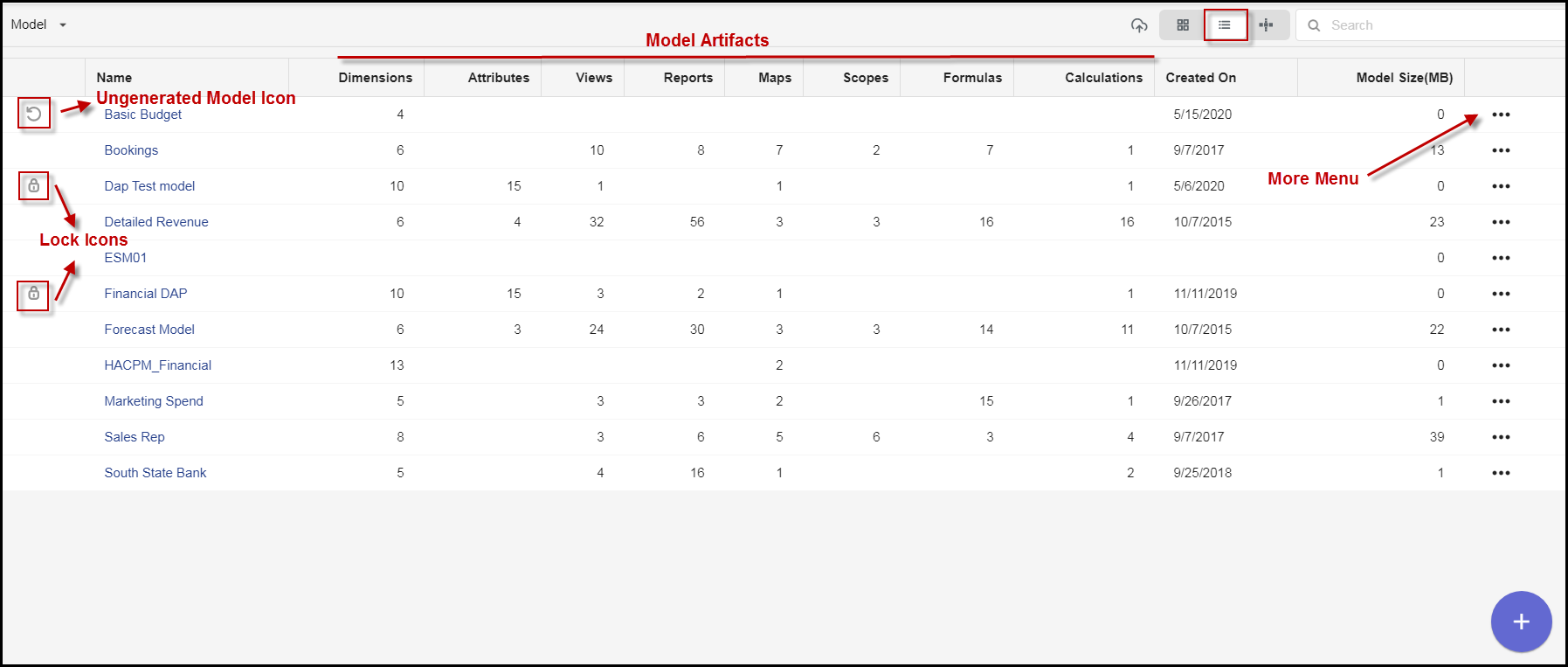
If you click on a model name in a model box, the layout goes to the Model Relationship layout. To return to the List layout, click the List icon.
There is no Sort menu in List layout because you can simply click a column heading to sort by that column. For example, click Created On to sort by Creation Date.

When a model is in a Locked state, you see a Locked icon next to the model name.
![]()
When a model is in an Ungenerated state, you see an Incomplete circle icon next to the model name.

To the right of each model is its More menu. The menu changes based on the model's status: generated or ungenerated.

The Model listing is a launchpad to more information about the model. You can click on artifacts or even in the blank space of the list to see additional information.
Reports and Views artifacts open the Report or View tasks.
Dimension and Attribute artifacts open the Dimension Browser or Attribute Browser.
Maps, Calculations, Formulas, and Scopes artifacts open the Model Artifacts Browser.
In the List layout, when you click the Creation Date, the Model Properties panel appears.
Using the Model Relationship Layout
This layout helps you to clearly visualize the data dependencies across the different models.
It gives a clear representation of how the models are connected, from which model the source data is coming, and to which model the data is being moved.
The Source section on the left displays the Models from where the data is being loaded and the Target section to the right displays the Models to where the data is being moved.
You can see the dimensionality of the Model along with the Maps which are used to load the data from source models to target models.
The relationships are built based on the how the maps are defined.
If you make any changes to the map, the same will be reflected in the model relationship view.
To use the Model Relationship layout, click the Model Relationship icon on the Model Manager ribbon, or click the Model name in the Grid layout.

Only Power and Contributor users have access to the Model Relationship layout.
The Model Relationship layout displays one or more Model boxes vertically for all the models you have access to. The layout shows the Source models (to the left) and Target models (to the right) associated with each Master model.
In the following example, HACPM_Financial provides the source data for the model Base Model. Base Model is also a source for Expenses Model. Additionally, Sales Rep is a source for Bookings, and Marketing Spend gets its data from Bookings.
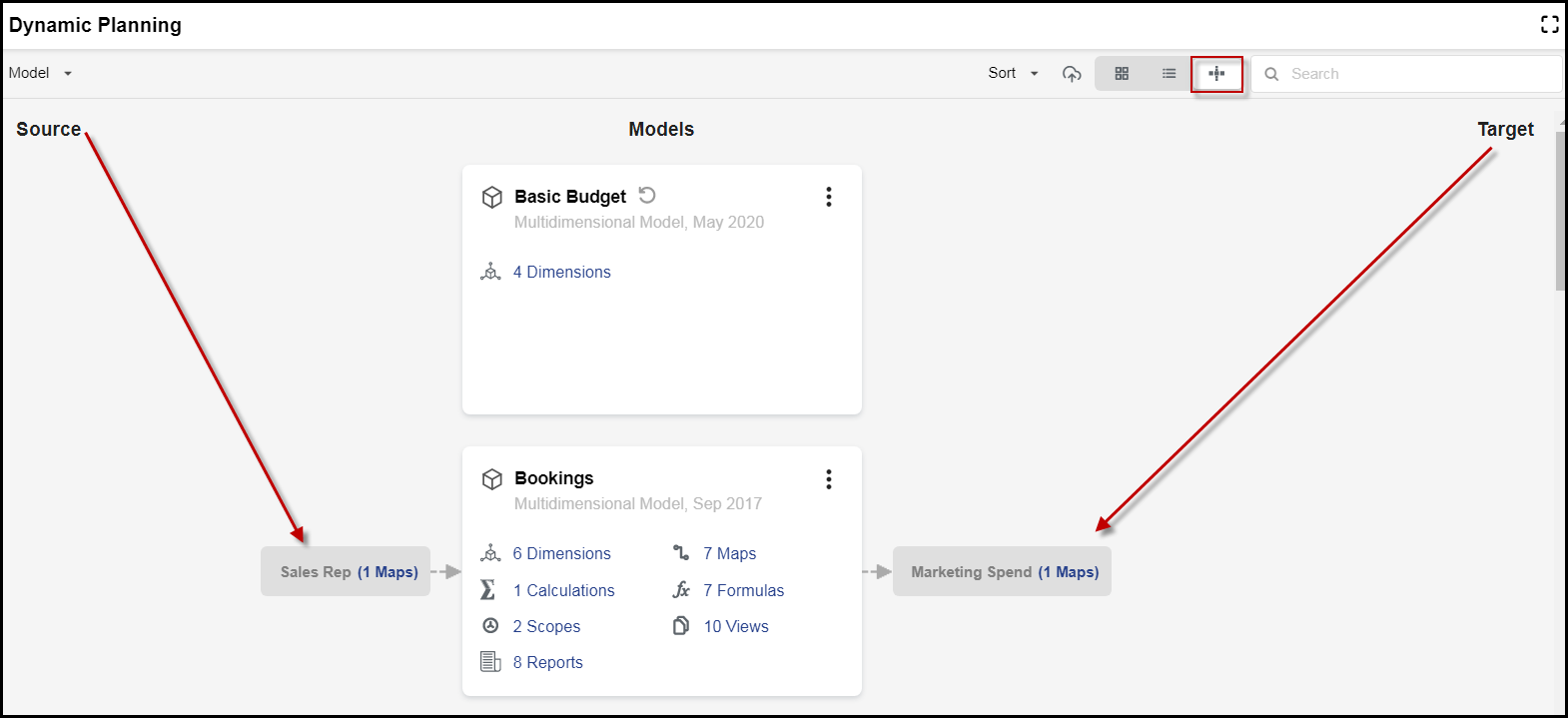
Sources and Targets are connected to a model with a Map. You can click the Map to launch the Model Artifacts Browser.

